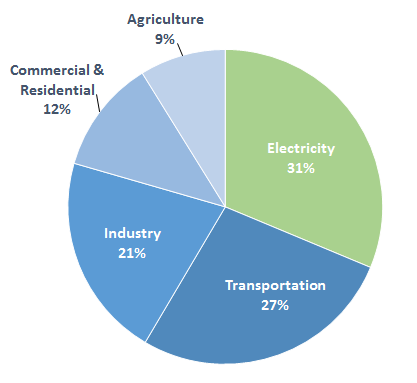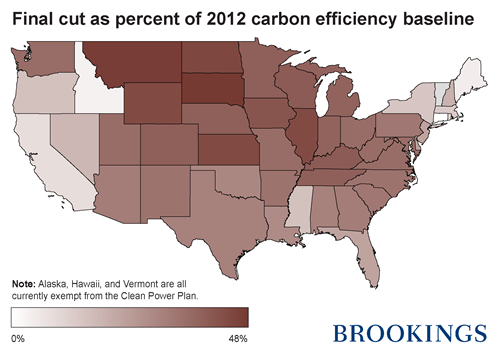Industry
Significantly Reducing America's Carbon Footprint
By Tarpan Dixit
| Reading time 2 minutes
The Clean Power Plan (CPP), finalized last week, is the most significant regulation of greenhouse gases in U.S. history. Since passing the Clean Air Act in 1963, the federal government has played a critical role regulating air pollution levels. Greenhouse gases were legally established as “air pollutants” by the Supreme Court after Massachusetts vs. EPA (2007). In 2009 the Clean Air Act was updated with a finding that listed six greenhouse gases (most notably CO2) as a hazard to public health and welfare paving the way for broader controls.
The CPP is centered around reducing CO2 emissions from power plants, the sector responsible for the largest slice of carbon production in the U.S. (31% in 2013). When fully implemented in 2030, carbon output from the power sector must be at least 32% lower than 2005. This results in a 870 million ton reduction in CO2 emissions, the equivalent of removing 166 million cars from the road. Initial cost/benefit estimates by the EPA claim a net benefit between $25B and $45B with an average monthly electricity bill savings of $80/year by 2030.

Every state has a target carbon emissions level set by the EPA. The target is a function of present-day power generation capacity and associated emissions levels. Power plants are categorized as either fossil fuel fired electric steam generation, natural gas combined cycle, or zero emission renewable energy. Many states have aggressively pursued renewable energy since 2005 and are well on their way to achieving 2030 targets. The map below from the Brookings Institute illustrates mandated carbon reductions by state. States with the largest gaps are dependent on coal for electricity generation.

Each state must propose a plan that includes interim milestones towards meeting their respective target no later than September 2018, with mandatory reductions starting in 2022. EPA will accept plans that specifically replace coal fired generation with natural gas and renewables, or plans that include mixed measures towards reducing carbon intensity. The latter allows for renewable portfolio standards, energy efficiency programs, purchase of emission rate credits, etc. The breadth of this mandate will likely result in prolonged court battles with states/industries adversely affected. While many states and numerous businesses have come out in support of the regulation, others claim economic damage from the measures.
Genability supports the Clean Power Plan and believes distributed generation and energy efficiency play a vital role in reducing energy consumption and the need for centralized power generation. The products and services offered by Genability in conjunction with providers of solar, storage, electric vehicle and connected home devices are already helping reduce emissions across the U.S.
Related Links
Also in Industry
Summer's Effect on Household Electricity Bills
By Kevin Timms | Jul 30, 2015
California Rate Reform, the Utility Death Spiral and the Duck Curve
By Justin Lee | Jul 20, 2015
The Environmental Protection Agency's Groundbreaking Power Plant Regulation
By Gabe Goffman | Jun 4, 2014
Department of Energy SunShot 1st Hackathon
By Eric Danziger | May 23, 2014

